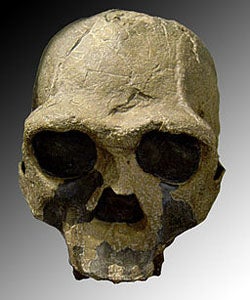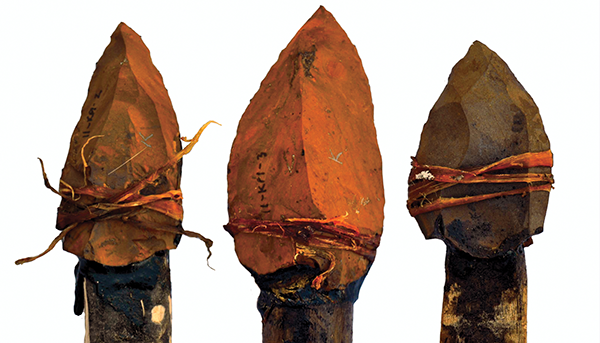
Early Homo
The deer-like leg sizzles over the open fire, softening hard pieces of fat and crisping up the outer layer of meat. A member of the group Homo pulls the leg out of the fire and starts pulling the meat apart. This will be an important meal because it has so many calories and nutrients. Cooking food can free up extra nutrients in many foods, including meat. The ability to use fire for cooking coincides with an increase in brain size among our ancestors.
T he earliest members of Homo, the genus that modern humans belong to, are known from as early as 2.8 million years ago in East Africa. These hominins may have hunted and scavenged animals. As a result, they ate more meat than earlier hominins, which allowed their brains to grow bigger. Indeed, we see a slight increase in brain size from Australopithecus with the emergence of Homo.
he earliest members of Homo, the genus that modern humans belong to, are known from as early as 2.8 million years ago in East Africa. These hominins may have hunted and scavenged animals. As a result, they ate more meat than earlier hominins, which allowed their brains to grow bigger. Indeed, we see a slight increase in brain size from Australopithecus with the emergence of Homo.
Brain size continued to increase with time so that more recent species of early Homo had even larger brains. This increase in brain size matches up in time with the first evidence of cooking.
As brain size increased, there was also an increase in the complexity of stone tools. These tools could have been used for preparing animal carcasses or food. The bodies of early Homo were also adapted to long distance travel. In fact, one early Homo species called Homo erectus was the first human to leave Africa and spread to other parts of the world. The large brains and toolmaking abilities of this species would have enabled such a migration.
Be Part of
Ask An Anthropologist
By volunteering, or simply sending us feedback on the site. Scientists, teachers, writers, illustrators, and translators are all important to the program. If you are interested in helping with the website we have a volunteers page to get the process started.

